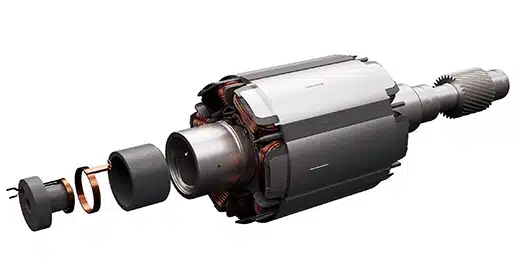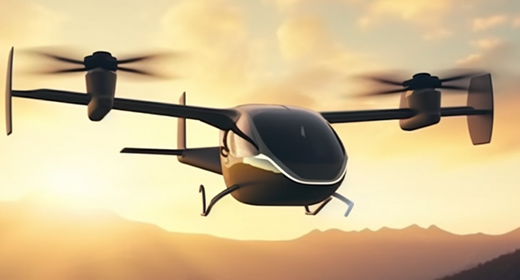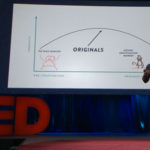Innovative design promises high performance without rare-earth magnets
BY Glenn Zorpette: Among the countless challenges of decarbonizing transportation, one of the most compelling involves electric motors. In laboratories all over the world, researchers are now chasing a breakthrough that could kick into high gear the transition to electric transportation: a rugged, compact, powerful electric motor that has high power density and the ability to withstand high temperatures—and that doesn’t have rare-earth permanent magnets.
It’s a huge challenge currently preoccupying some of the best machine designers on the planet. More than a few of them are at ZF Friedrichshafen AG, one of the world’s largest suppliers of parts to the automotive industry. In fact, ZF astounded analysts late last year when it announced that it had built a 220-kilowatt traction motor that used no rare-earth elements. Moreover, the company announced, their new motor had characteristics comparable to the rare-earth permanent-magnet synchronous motors that now dominate in electric vehicles. Most EVs have rare-earth-magnet-based motors ranging from 150 to 300 kilowatts, and power densities between 1.1 and 3.0 kilowatts per kilogram. Meanwhile, the company says they’ve developed a rare-earth-free motor right in the middle of that range: 220 kW. (The company has not yet revealed its motor’s specific power—its kW/kg rating.)
The ZF machine is a type called a separately-excited (or doubly-excited) synchronous motor. It has electromagnets in both the stator and the rotor, so it does away with the rare-earth permanent magnets used in the rotors of nearly all EV motors on the road today. In a separately-excited synchronous motor, alternating current applied to the stator electromagnets sets up a rotating magnetic field. A separate current applied to the rotor electromagnets energizes them, producing a field that locks on to the rotating stator field, producing torque.
“As a matter of fact, 95 percent of the rare earths are mined in China. And this means that if China decides no one else will have rare earths, we can do nothing against it.” —OTMAR SCHARRER, ZF FRIEDRICHSHAFEN AG
So far, these machines have not been used much in EVs, because they require a separate system to transfer power to the spinning rotor magnets, and there’s no ideal way to do that. Many such motors use sliders and brushes to make electrical contact to a spinning surface, but the brushes produce dust and eventually wear out. Alternatively, the power can be transferred via inductance, but in that case the apparatus is typically cumbersome, making the unit complicated and physically large and heavy.
Now, though, ZF says it has solved these problems with its experimental motor, which it calls I2SM (for In-Rotor Inductive-Excited Synchronous Motor). Besides not using any rare earth elements, the motor offers a few other advantages in comparison with permanent-magnet synchronous motors. These are linked to the fact that this kind of motor technology offers the ability to precisely control the magnetic field in the rotor—something that’s not possible with permanent magnets. That control, in turn, permits varying the field to get much higher efficiency at high speed, for example.
With headquarters in Baden-Württemberg, Germany, ZF Friedrichshafen AG is known for a rich R&D heritage and many commercially successful innovationsdating back to 1915, when it began supplying gears and other parts for Zeppelins. Today, the company has some 168,000 employees in 31 countries. Among the customers for its motors and electric drive trains are Mercedes-Benz, BMW, and Jaguar Land Rover. (Late last year, shortly after announcing the I2SM, the company announced the sale of its 3,000,000th motor.)








































